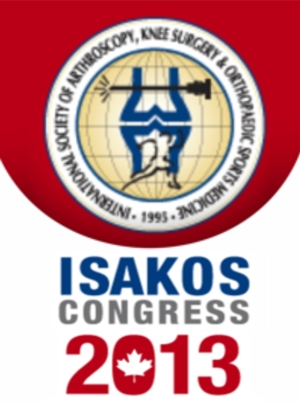
ISAKOS: Similar prevalence of OA after ACL Recon when comparing Hamstring and BTB grafts

ISAKOS: Similar prevalence of OA after ACL Recon when comparing Hamstring and BTB grafts
Increased Risk of Osteoarthritis After ACL Reconstruction – A 14-year Follow-up Study of a Randomized Controlled Trial
CONFERENCE ACE REPORTS
This ACE Report is a summary of a conference presentation or abstract. The information provided has limited the ability to provide an accurate assessment of the risk of bias or the overall quality. Please interpret the results with caution as trials may be in progress and select results may have been presented.
Synopsis
The long term prevalence of osteoarthritis following ACL injury and reconstruction was assessed to compared differences between graft types and identify other possible predictors in a 14 year follow-up of a randomized trial. 164 (82% evaluated) patients were randomized to either semitendinosus-tendon graft or bone-patella-tendon-bone graft. The 14 year radiographic outcomes displayed an increased ...
To view the full content, login to your account,
or start your 30-day FREE Trial today.
FREE TRIAL
LOGIN
Forgot Password?
Explore some of our unlocked ACE Reports below!

Learn about our AI Driven
High Impact Search Feature
Our AI driven High Impact metric calculates the impact an article will have by considering both the publishing journal and the content of the article itself. Built using the latest advances in natural language processing, OE High Impact predicts an article’s future number of citations better than impact factor alone.
Continue



 LOGIN
LOGIN

Join the Conversation
Please Login or Join to leave comments.